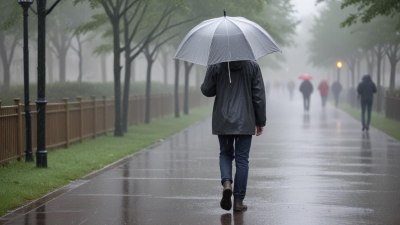Lightning and Thunder: The Dynamic Duo of Drama
Understanding the Power Behind Thunderstorms and Their Impact

Image by masharinka89 on Freepik
There’s nothing quite like the dramatic display of a thunderstorm. The sky darkens, the air feels charged, and then—BOOM—a clap of thunder shakes the ground, followed by the flash of lightning. The contrast between these two forces creates a spectacular light-and-sound show, but what’s really happening in the atmosphere to cause this dynamic duo of nature’s drama? And why does thunder seem to follow lightning, and not the other way around?
In this article, we’ll explore the science behind lightning and thunder, dispel common myths, and take a closer look at how they both impact our lives. Whether you love the excitement of a thunderstorm or find it terrifying, understanding these natural wonders might just change how you experience the next one.
What Causes Lightning to Strike?
Lightning is one of nature’s most powerful and awe-inspiring forces. But what exactly causes it? At its core, lightning is a discharge of electricity in the atmosphere. It occurs when there’s a buildup of static electricity in the clouds. This buildup happens when warm, moist air rises, and as it cools, the water droplets within the clouds form and start colliding with each other.
The collisions cause the cloud to become electrically charged—positively at the top and negatively at the bottom. The negatively charged area at the base of the cloud then attracts positive charges on the ground. When the electric field becomes strong enough, the air is ionized, creating a path for the electricity to travel, and—zap!—a lightning bolt strikes, usually from cloud to ground, but sometimes from cloud to cloud.
Why Does Thunder Follow Lightning?
Thunder isn’t just a random noise; it’s the sound created by the rapid expansion of air that occurs when lightning strikes. The heat from a lightning bolt is intense—reaching temperatures of around 30,000 Kelvin (53,540°F), which is five times hotter than the surface of the sun!
This extreme heat causes the air around the lightning bolt to expand rapidly, creating a shockwave. The shockwave travels through the air as sound, and that’s what we hear as thunder. Since light travels faster than sound, we see the flash of lightning before we hear the thunder. The distance between you and the lightning strike determines the delay between the two: the further away the lightning, the longer you’ll have to wait before hearing the thunder.
How Far Away Is the Storm? How to Tell with the Lightning-Strike Count
When you see lightning, it’s common to wonder how far away the storm is and whether it’s approaching or moving away. A simple way to estimate the distance between you and the storm is by counting the seconds between the flash of lightning and the sound of thunder. For every five seconds that pass between the two, the storm is approximately one mile away.
Here’s the method: As soon as you see the lightning flash, start counting the seconds. When you hear the thunder, stop counting. Then divide the number of seconds by five to calculate the distance in miles. For example, if it’s 15 seconds between the lightning and thunder, the storm is roughly 3 miles away.
The Dangers of Lightning and Thunder
While lightning and thunder can be thrilling to witness, they are far from harmless. Lightning causes significant damage and poses serious safety risks, while thunder is a loud and potentially startling reminder of how powerful these storms are.
1. Lightning Strikes: Lightning strikes kill about 20 people per year in the United States alone and cause countless injuries. It’s a common myth that lightning only strikes the tallest objects, but in fact, it can strike any object that provides a path for electrical discharge. Trees, buildings, and even people caught outdoors can be struck.
Additionally, lightning can start fires, damage electrical systems, and knock out power grids. If lightning strikes your car, it is typically a safe space because the metal frame acts as a Faraday cage, directing the electrical charge around you, not through you.
2. Thunderstorm Winds: Thunderstorms often come with strong, gusty winds that can cause damage similar to that of a tornado, especially when winds exceed 58 mph. These winds can uproot trees, knock down power lines, and damage buildings, making it crucial to seek shelter when a thunderstorm approaches.
3. Flash Flooding: Heavy rainfall often accompanies thunderstorms, leading to flash flooding in vulnerable areas. Even areas that aren’t near rivers or streams can experience flooding, as rainwater quickly accumulates on streets and in low-lying regions.
Thunderstorm Safety Tips
While you can’t control the weather, there are steps you can take to protect yourself and your property during a thunderstorm. Here are some key tips:
1. Stay Indoors: The safest place to be during a thunderstorm is indoors. Avoid going outside until the storm has passed, and never take shelter under trees, which are prime targets for lightning strikes.
2. Avoid Electrical Appliances: Since lightning can strike power lines and electrical systems, it’s important to stay away from appliances that are plugged into the wall. Unplug electronics if you can, and avoid using wired devices like phones or computers during the storm.
3. Seek Shelter in a Car: If you’re caught outside during a thunderstorm, the best option is to get into a car. A car’s metal frame can protect you from lightning, but avoid touching anything metal inside the car while the storm is in progress.
Why Do Thunderstorms Feel So Dramatic?
There’s something inherently exciting—and even a little frightening—about thunderstorms. The combination of bright lightning and loud thunder triggers a strong emotional response, and it's easy to understand why they have been the subject of so many myths and stories throughout history.
Part of the drama is the unpredictability of these storms. Thunderstorms can develop quickly and with little warning, which can make them feel more intense. The high contrast of light and sound, combined with the changes in temperature and wind, creates an atmosphere that’s hard to ignore.
Throughout history, thunderstorms have been associated with various superstitions and beliefs. In many cultures, thunder was thought to be the voice of gods, and lightning was seen as a sign of divine wrath. Today, we understand the science behind these natural phenomena, but they still hold a certain mystique and power that makes them one of the most dramatic events in nature.
The Future of Thunderstorms: Climate Change and Intensity
With climate change altering weather patterns around the world, scientists are noticing that thunderstorms may become more intense and frequent in some areas. Warmer temperatures and higher levels of moisture in the atmosphere are contributing to more severe storms, which can result in stronger lightning and more intense thunder.
While this means we’ll likely see more dramatic storms, it also means we’ll need to be extra cautious in the future. Understanding the risks and taking steps to stay safe during a thunderstorm will continue to be important as weather patterns change and the storms themselves grow more volatile.
Whether you're a fan of the show or someone who’d rather wait it out in the safety of your home, the relationship between lightning and thunder is a reminder of the raw power of nature. As long as we understand their behavior, we can enjoy the spectacle while staying safe.











